- Home
- Jonathan Gash
The Grail Tree Page 13
The Grail Tree Read online
Page 13
‘Maslow asked why I don’t make a fortune.’
‘That’s because the man’s an imbecile,’ Sarah said. She sat down, doing the leg twist thing again, almost as if she hadn’t noticed my difficulties when she attracted my attention this way. ‘I’ll pay you.’
I paused at that. She was smiling.
‘An allowance, Lovejoy. Nothing sinister.’
‘Antiques?’ My mind began to race happily ahead into those meadows of buying and selling where antiques blossom like flowers in springtime, but she was shaking her head.
‘While you find what actually happened to Henry.’
‘And his Grail?’
‘That too. But it comes second, a long way second. Agreed?’
I told her I agreed, though I had no right. Antiques naturally come first every time.
‘I’ll have my agent send you a weekly sum, payable from now.’
‘Er, can I have some on account?’ I asked, trying to be off hand. ‘I’m a bit strapped at the minute.’
She laughed and clapped her hands delightedly. This is an unusual response but women are odd.
‘And tell me about this thing Henry lit candles for.’
She did, only getting into her stride after she’d rolled in the aisles some more while giving me a week’s advance.
Henry Swan, Thomas Haverro and James H.C. Devonish had been undergraduates together at Selward College, Cambridge. Mainly for religious studies of the Established Church, it had tolerated Thomas when he had bumbled his way into the medical faculty across the way. In contrast, James and Henry went straight but only Henry served the Church. Devonish went to become adviser in the prison service and worked gallantly for malcontents till he died in a road accident. Sarah was the result of a chance meeting with an old friend. Though much younger than Devonish, she’d married him and they’d had a few years of happiness together before the accident.
‘James told me about the Grail,’ she told me reflectively. ‘I remember it quite clearly, the odd story, even the words he used. An open, lovely man. But it was only in our last year he explained.’
As undergraduates the trio went on holiday to Berwick. A crumbling old church by the lovely Northumbrian shore captured their romantic imagination and they made quite a thing about trying to have the authorities restore it. Naturally, as with all such brave attempts, they failed. But it was there that they came across the Grail. With romance burning in their youthful souls they decided to adopt it there and then.
The church was obviously derelict. That particular bit of coastline is favoured by curious spells of beautiful pacific weather, dull gold sunshine and skies clear to the planets and back. The seas were clean and dark, the sea stones tumbled sharp in heaps on miles of crisp sands where birds fly flock after flock and distances from each inlet to the horizon seem infinite. I know the whereabouts of the ruined church but couldn’t recall having seen it.
‘South of Berwick?’
‘James described it as a few miles from the Tweed estuary. He said you could see the sandbanks clearly from the churchyard. They used to cycle out and have picnics on the shore.’
An elderly man met up with them one day, the second holiday they took in those parts. He had heard of their attempts to rescue the old church and sought the trio out. He told the youngsters he had the Grail, passed down according to tradition from hand to hand. Listening to Sarah’s second-hand account, I had more sense than to ask how it had got from ancient Jerusalem to modern Berwick.
‘That’s near Holy Island,’ I remembered suddenly. ‘Lindisfarne.’
This long promontory runs into the ocean from the coast, roughly south-east. At the end is a cluster of houses, a post office and an old monastery. It’s where the magic and mysterious Lindisfarne Gospels hail from, those dazzling intricate pages made and embellished by the devout hands of saints themselves. I shifted uncomfortably. All of a sudden silly old drunken Henry seemed less daft.
‘This old chap –?’
‘Was the last priest of that particular church.’
‘Shouldn’t he have given it in? Surrendered it to the local archbishop, something like that?’
‘He distrusted the Church. He feared the Grail would be lost, derided –’ She shrugged. ‘Henry felt the same. That’s the reason James never took a parish.’
In a way I could sympathize with a tired over-stretched bishop, facing his millionth report of the Grail’s finding, knowing as he wrote the report it was only the start of another epidemic of identical reports.
‘And did this bloke just haul it out of his pocket and hand it over?’
‘No. It took a year,’ Sarah explained. ‘He insisted on having them stay in his house and talk, explain their motives, beliefs. James used to joke about it, said it was worse than his Cambridge Finals.’
The elderly priest showed it them. From Sarah’s description they were all chastened, Henry most of all. I suppose, reading between the lines, three young students can’t really be blamed for a certain amount of cynicism. Maybe they’d even secretly joked about the mad old parson among themselves, in the same way as I’d thought how cracked Henry was.
‘James was partly convinced,’ Sarah said. ‘Henry was utterly sold. I can imagine it. The very beauty of the idea is transfixing, after all.’
‘And Thomas?’
‘Well, scientist,’ Sarah said defensively. It made me look at her. She laughed, embarrassed, for once caught out of her stride. ‘He was bound to disbelieve, wasn’t he? He went along with the other two, though. Paid his share.’ I couldn’t help thinking. Sarah and Thomas Haverro . . .?
‘Paid?’ My voice must have sounded ugly because she cooled me with a brief chilling stare.
‘Nothing like that, Lovejoy. It was a gift. In trust.’
She began to explain.
The cup was merely battered old pewter, ‘shallow as an eggcup’, James Devonish had described to Sarah. It had come to light somewhere in the Great Civil War, about 1643. Unaccountably, the legend stuck like glue to the little vessel. It apparently seized the religious admiration of the time throughout the district. It became a small focus of local miracles, was even worshipped. Pilgrimages were made. At the Restoration, a Mercian prelate threw his conviction behind it and had a tiny silver casket constructed to contain it. The casket was tree-shaped, probably intended as a religious symbolism.
‘It was sealed in,’ Sarah said. ‘You could only see through the crystal trunk. The cup was fixed.’
‘Crystal windows, like an old lantern has?’
‘Yes. That was how James explained it.’ I switched the fire on to give us something to stare at. I was scared of interrupting Sarah’s flow of reminiscences. Her face looked quite beautiful, lit by the red glow and smiling wistfully. ‘Before then,’ she went on, ‘it had just been on a tiny gold plinth.’
‘And after?’
‘Oh, as it was handed on each generation seemed to have added to it.’ I said I didn’t follow. ‘Well, made it more precious,’ she said. ‘Remember, I never saw it. But the old vicar had a list of the main things that had been done.’
‘Are we still talking about a small pewter cup?’
‘Why, yes, of course, but I suppose the value of the casket was extremely high.’ I cleared my throat and blinked a few times. The fire was drying my eyes. ‘Because of the additions, you see.’
I saw all right.
‘Who?’
‘I can’t remember all the names James told me. Different jewellers and suchlike, down the ages.’ She smiled reflectively. ‘Thomas Tucker was one. Another was called Sweet. Those made me laugh.’
‘And they did some work on the Grail?’ My throat felt raw.
‘Yes. It must have been beautiful.’
‘Do you remember any other names?’ Tom Tucker’s about 1692. Sweet was one of many West Country silversmiths of that name spanning the period.
‘Hester somebody.’
‘Bateman?’
‘That’s it. And
Fabergé, of course, in later years.’
I went giddy. She couldn’t remember any more, but I’d been told enough.
The idea was almost infallible. Where a ‘worthless’ object needed to be preserved, impress succeeding generations by decorating it. A wealthy generation would expend enormous wealth on a religious relic, a poor lot much less. But for Hester Bateman, that extraordinary silversmith, to add a mystical silver decoration to the work of the other geniuses like Sweet and Tucker, and for that to culminate with the brilliant Russian designer Fabergé . . .
‘He was the last,’ Sarah said sadly. ‘Before the Great War. The old vicar’s father had taken it to St Petersburg.’ I thought, Dear God. ‘Henry had plans for us to put money together and add at least a token piece of art to the Grail. It came to nothing, though. Such a shame.’
I questioned her back and forth but got nothing more. The original crystal casket had become the trunk. Different workers had added branches, leaves, jewels for fruit. And inside the priceless tree the battered pewter cup which legend said was the Grail itself. It was in a small wooden box for carrying.
‘James told me the order in which the various additions were made,’ Sarah explained. ‘But I can’t possibly remember.’
‘Jesus!’
We sat and watched the fire. Sarah’s the sort that you never see putting lipstick or powder on. We held hands.
‘Er, Sarah. You and Thomas . . .?’
‘Well.’ That laugh again. ‘After James died, Thomas asked me. I refused. We were close at one time. I decided to live alone.’ She glanced across the firelight at me, smiling. ‘I found the role of a viable widow at least as . . . worthwhile as the wife of a hard-working doctor.’
All my suspects were vanishing one by one. And now the commonplace myth was turned into a sober reality. Sanctification by use, Henry had called the process, I thought bitterly. But his precious Sanctification had taken place at the hands of several artistic geniuses over some three hundred years at least. The motive for sinking Henry’s barge was no longer hidden. It was clearly and utterly greed. I felt ill. How bloody typical of our modern day. Absolutely bloody typcial. We can’t even be wrong right.
‘Are there no more people who might have known?’
‘Well . . . no. Not really,’ she said, hesitating. ‘Thomas never married. I know for a fact James told no one but me. Martha’s been the same, very much in the dark and reticent. Although . . .’
‘Yes?’
‘Well, I often wonder about Thomas’s nephew.’
‘Does he live locally?’
‘Why, yes. Alvin. You know him, though of course he’s perfectly trustworthy –’
‘Alvin?’ I suddenly didn’t like this at all.
‘Alvin Honkworth. An attractive sort, but –’
And Sarah went on to say how pleasant Honkie was . . . Now I had the missing motive, greed. And now maybe the killer as well. And a splitting headache, because didn’t Maslow say that Honkie was the one suspect who had a cast-iron police-documented alibi?
As Sarah left we arranged for me to report in on my progress. She was putting her hat on in the hall when I opened the cottage door. Betty Marsham’s smile faded as she saw past me into the light.
‘Good evening, Lovejoy.’
‘Er, why, hello, Mrs Marsham!’ I cried jovially, in an instant panic. ‘I’m afraid your Regency floral-painted butler’s tray hasn’t arrived. Would tomorrow do?’
‘Certainly,’ Betty said, falling in. ‘Would you please telephone me without delay?’
‘I will,’ I promised, and did a clumsy rotten introduction in the doorway.
Betty took one road at the chapel and I ran Sarah down to the railway station.
‘I’m sorry about that, Lovejoy.’ Sarah smiled as I dropped her off. ‘How terribly disappointed Mrs Marsham was about her Regency serving tray!’
‘A serious collector,’ I lied casually.
‘I could see that,’ Sarah said sweetly. ‘I’ll endeavour to make it up to you. Good night.’
I watched her move into the station. She bought a ticket, had it clipped at the barrier and descended the steps. Still in sight, but without turning to look back, she raised a hand in an elegant slow wave while walking on down. I drove off. With idiots like me about, no wonder women are so confident.
That night I was so full of bitterness I hardly slept. Poor Henry’s devotion had missed out, founded as it was on mere holiness. The murderer’s love of the mysterious little pewter Grail wasn’t holy. It was pure greed. This battle was my kind of war after all.
I finally dozed contentedly. I may not be much good at holiness, but I’m bloody good at greed. It’s my subject.
Chapter 15
LONDON HAS NEARLY as many street markets as it has streets, but the only ones which matter to me are the antique markets. Naturally, London being London and all, some of the most famous ‘antique markets’ aren’t anything of the sort – like Petticoat Lane, which is mostly for new cheap goods. There’s another slight difficulty: famous street markets with a name known the world over aren’t on the map at all, being called something completely different – also like Petticoat Lane, which is officially Middlesex Street.
In case you ever go, take a tip: ask yourself the all important question, What am I going for? It’s pretty vital. Supposing for example you are a diehard collector of antique silver or jewellery. Well, you’d turn off Houndsditch into Exchange Buildings Yard near Cutler Street, the world’s grimiest, dingiest and most prolific antique silver market, about eight o’clock on a Sunday morning. And a real collector will be there long before that, when most of the deals are done. If you are only after second-hand modern furnishings, say, you’d go to Cheshire Street, also near Petticoat Lane, and romp there to your heart’s content. A regular ‘trade’ dealer in antiques will do better going to Portobello Road – be there at eight-thirty on a Saturday morning to get the real flavour of the world’s only antiques scrum. If on the other hand you’ve got a reliable alarm clock, breeze into the New Caledonian market in darkest Bermondsey, but five o’clock on a wet and windy Friday morning isn’t too early because dealing starts long before that. But the ‘ordinary’ collector (pretending for the moment that there is such a thing) should go to Camden Passage for friendliness and merriment. Go on Saturdays, and arrive mid-mornings like I do, because it has its own nosh bars – all better than Woody’s, you’ll be astonished to learn. There are plenty of others.
I’ve left the Belly last. I’ll set the scene first. Time: Saturday about six a.m., and Lovejoy rolling up exhausted in his crate after a nightmarish journey through the early London streets wondering if the engine was going to give out from fatigue. Place: Portobello Road, near Ladbroke Grove tube station, and already people flocking there. Dealers are always on the site an hour before, but my zoomster wasn’t up to it.
By the time I arrived the entire mile-long crush was alive. Seen from the Westway Flyover it looks like a tin of heaving maggots. No antiques market’s pretty but they’re all beautiful, and the Belly’s most beautiful of all. There isn’t a dealer who won’t sweat blood to help anybody selling or buying. It isn’t just a street market, either. Shops, galleries and antique arcades are there as well crammed into the entire glorious stretch, with alleys and crannies bulging with antiques of all periods – and I do mean all. Care is needed, because for every fixed stall or shop you get maybe ten wandering dealers with things to sell. Like I say, careful. A shop-bound dealer is likely to be reachable next morning, but strolling footloose dealers will tend to be very fleet of foot. Sykes is one of these.
I started at the south end because one’s thirst is naturally terrible at the finish, when by sheer coincidence one arrives exhausted at the Duke.
Overcoated hard nuts were about, playing the ‘casing game’. You do this by ambling, seeming to pay no real attention to anything except your pal’s chat about Newmarket yet actually collecting details of valuable items. You decide which antiques de
aler has most desirable stuff. Then you simply tell your minions to either (a) do over that particular dealer’s home or shop, for the money therein, or (b) steal the main items and hold them for a ransom-price – commonly rumoured to be about a quarter to two-fifths of their retail price. Who pays the ransom, the trader or an insurance company, is largely irrelevant. Circuses have other endearing mannerisms, but ‘going on the case’ is their commonest trade. It does need a certain number of lackeys however. Sykes has plenty.
I passed a couple of hard lads and dropped word I was cross with Sykie. They knew my name and said he was about, while I went looking for pots.
That delectable puce colour on Derby porcelain is really rare, especially done with inset roses by William Billingsley. You find them with a blue-and-gilt border, with a landscape in the plate’s centre by Boreman. I got an option on one, a perfect 1790 piece, all before I’d gone a hundred yards, though genuine chimes belled all around. I was almost in despair after another hundred. No cash, and a perfect ‘banjo’ barometer of West Indian satinwood by Broggi of London about 1787 was sounding sweetly across the crowded pavement. On I went, dropping a word about Sykie and sinking into gloom at the beauty all the way up the Road. Real – genuine! – Sheraton wine tables, Hepplewhite elbow chairs, Regency silverware to melt your heart, flintlock weapons by the immortal Nock and Manton, Meissen chocolate pots with the original handles, early blue and white of ‘Worcester Tonquin Manufacture’ – as the original article of June, 1751, termed it – enough apron-fanned serpentine English sideboards to line both pavements, and Islamic and Continental antiques by the boatload.
I was arguing about a piece of Iznik pottery which I craved when the Sykes brothers tapped me on the shoulder.
‘Dad wants to see you, Lovejoy.’
‘Comrades,’ I said over my shoulder, not letting go of the shallow dish, ‘you can wait, or we’re going to hear the sound of shattered elbows.’

 The Sleepers of Erin
The Sleepers of Erin The Rich And The Profane
The Rich And The Profane Firefly Gadroon
Firefly Gadroon Finding Davey
Finding Davey The Gondola Scam
The Gondola Scam Pearlhanger
Pearlhanger The Year of the Woman
The Year of the Woman A Rag, a Bone and a Hank of Hair l-21
A Rag, a Bone and a Hank of Hair l-21 The Possessions of a Lady
The Possessions of a Lady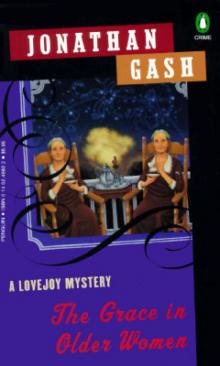 The Grace in Older Women
The Grace in Older Women Faces in the Pool
Faces in the Pool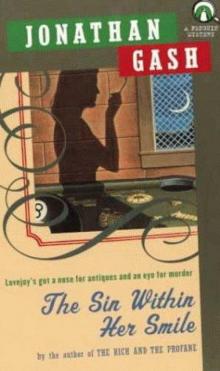 The Sin Within Her Smile
The Sin Within Her Smile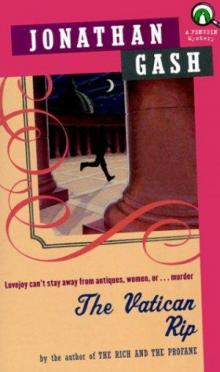 The Vatican Rip l-5
The Vatican Rip l-5 The Great California Game l-14
The Great California Game l-14 The Tartan Ringers
The Tartan Ringers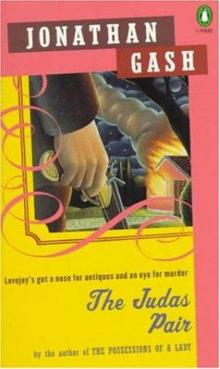 The Judas Pair l-1
The Judas Pair l-1 The Lies of Fair Ladies
The Lies of Fair Ladies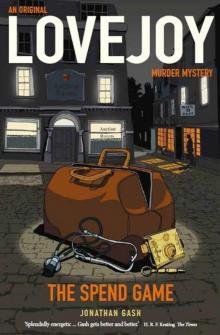 Spend Game
Spend Game Jade Woman l-12
Jade Woman l-12 Gold by Gemini
Gold by Gemini The Very Last Gambado
The Very Last Gambado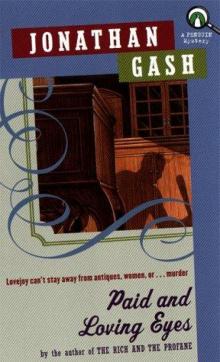 Paid and Loving Eyes l-16
Paid and Loving Eyes l-16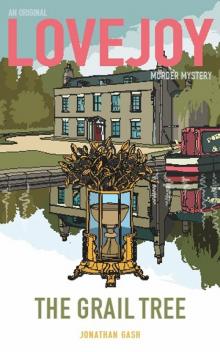 The Grail Tree
The Grail Tree The Judas Pair
The Judas Pair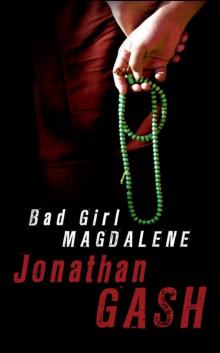 Bad Girl Magdalene
Bad Girl Magdalene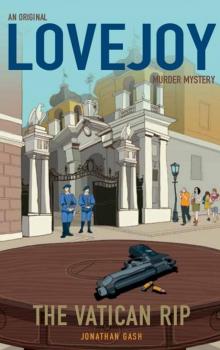 The Vatican Rip
The Vatican Rip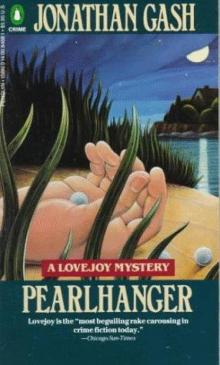 PearlHanger 09
PearlHanger 09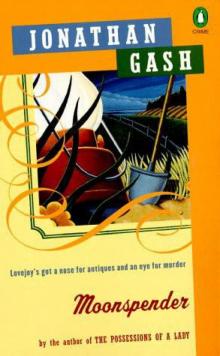 Moonspender
Moonspender Ten Word Game
Ten Word Game